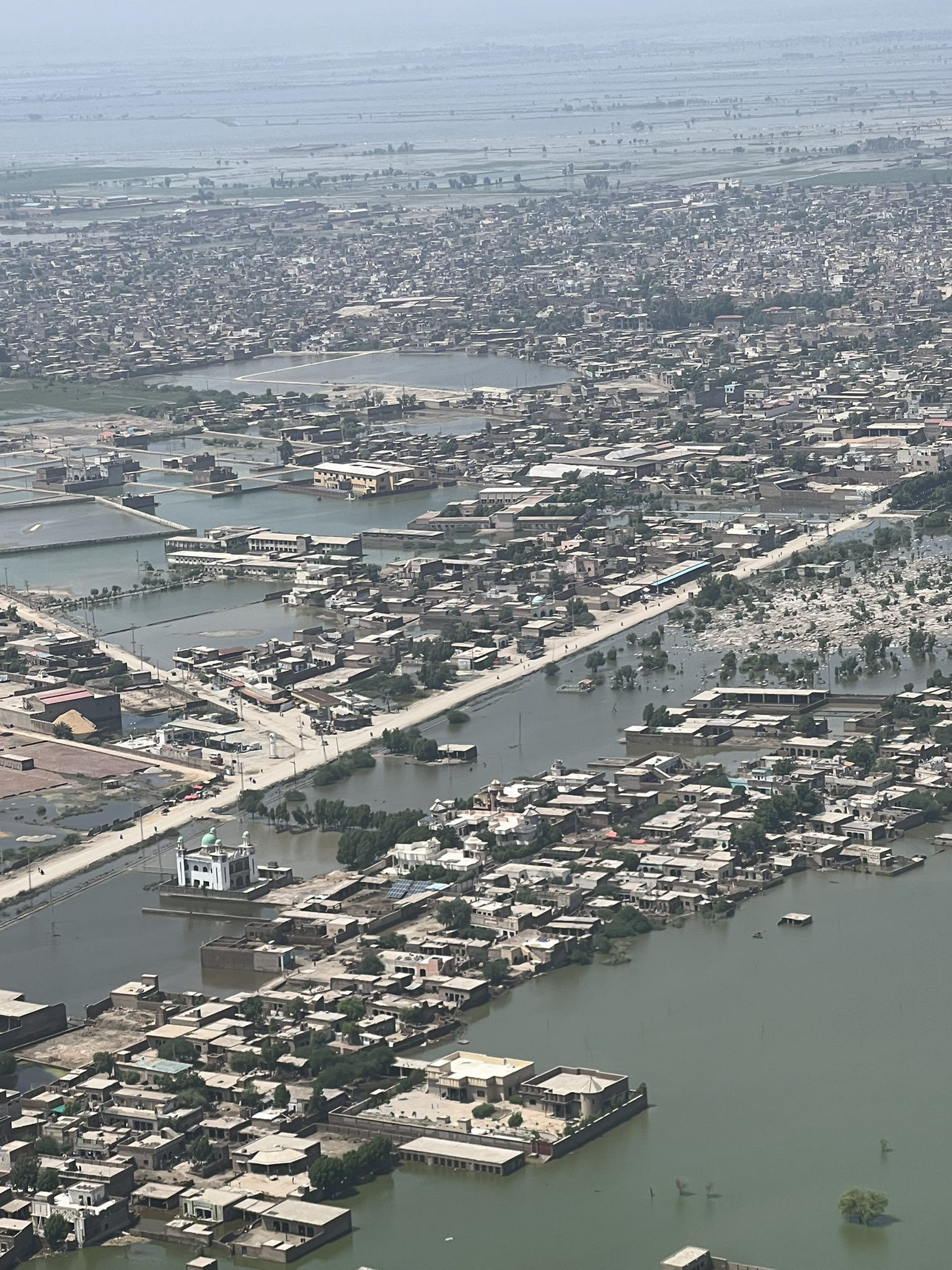One third of Pakistan is underwater due to flooding, killing more than a thousand and destroying the homes of millions.
Sindh province in Pakistan underwater 2022. Ali Hyder Junejo. CC BY 2.0.
Since June of 2022, Pakistan has been hit with floods, monsoons and tsunamis. These floods have tragically ended the lives of thousands, including many children, and forced millions of families to abandon their homes, as an astonishing one third of the country is underwater as of September, causing the death of approximately 1,500 people. Many people are wondering how an environmental disaster of this scale is possible: how have the floods not ceased for months, and how can people around the globe help the people of Pakistan? Scientists say it all comes back to climate change. For about two months prior to the floods, Pakistan experienced severe heat waves, with temperatures ranging from 40 degrees celsius to a high of 51 degrees celsius (a range of 104 to 123 degrees fahrenheit). These heat waves alone qualify as an environmental crisis, but what they led to was much worse.
There are two primary reasons that this heat wave led to flooding. The first is that hot air tends to contain more moisture than cold air, leading to higher rates of rainfall following the heatwave. The second is a devastating effect of climate change that has been seen all over the world: higher temperatures cause glaciers to melt, flooding into bodies of water which then overflow. In the case of Pakistan, this overflow of water has caused dams to break, leading to extremely dangerous floods, with water unexpectedly rushing onto the land.
Previous flood in Pakistan, 2010. Oxfam International. CC BY-NC-ND 2.0.
These disastrous climate events have resulted in destroying agricultural products, displacing roughly 30 million Pakistanians and killing over 1,000 people, with around 500 being children. The destruction of crops has led to further economic crises as well as increased hunger and disease. The chief of the World Health Organization noted an increased risk of several diseases in Pakistan, such as gastrointestinal diseases, skin infections and respiratory illness. Additionally, many hospitals have been destroyed, leaving the country even less prepared to address the millions of people in need.
Get Involved
There are several organizations which are sending aid to Pakistan right now, such as UN Women, which is sending food, medical supplies and sanitary products to Pakistan. There are also several Pakistan-based organizations to support, such as HANDS Pakistan and the Indus Hospital & Health Network, which provides free healthcare to people in need in Pakistan, at a more-important-than-ever moment like this.
Calliana Leff
Calliana is currently an undergraduate student at Boston University majoring in English and minoring in psychology. She is passionate about sustainability and traveling in an ethical and respectful way. She hopes to continue her writing career and see more of the world after she graduates.



